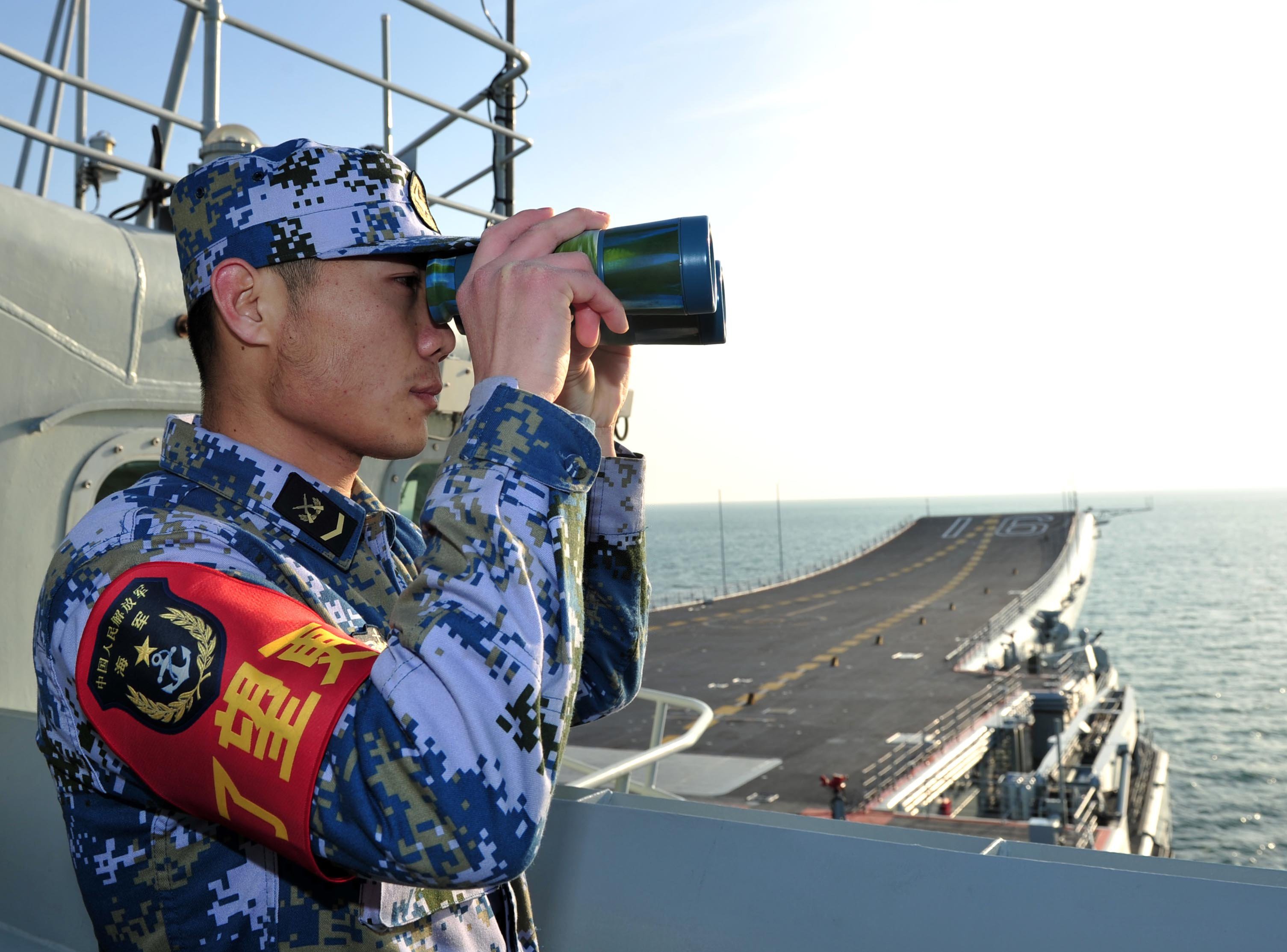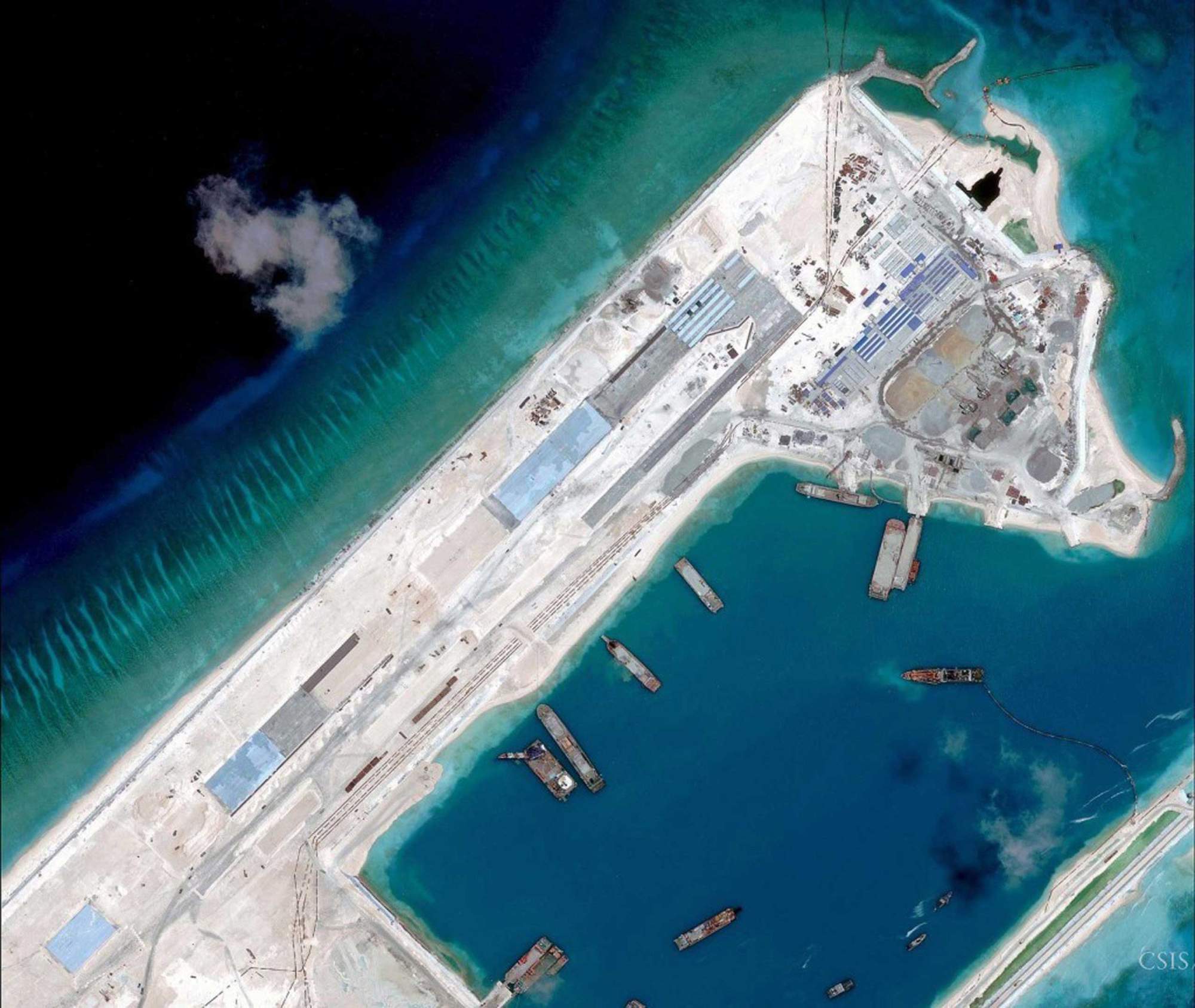
The coral reefs on which China is building airstrips are “not just a bunch of rocks, ”but the transit point for about half of the world’s maritime containerized cargo,” Michael Green, vice president for Asia at the Center for Strategic and International Studies, said Monday.
Speaking as part of a panel discussion on China’s growing maritime influence at the Washington, D.C., think-tank, he added those reclamation projects allow Beijing to “maintain a constant presence” with a growing number of aircraft and ships that “you have to deal with . . . in U.S. planning and [are] intimidating smaller states,” such as the Philippines and Vietnam.
Like Russia in Ukraine and with its neighbors and Iran in the Middle East, China was establishing “a gray zone of coercion,” Green added, designed to “shake the credibility of the U.S. commitment” to the Pacific among its allies and partners.
The Chinese now “are in the assessment phase” of what the transit of the U.S. guided-missile destroyer USS Lassen (DDG-82) in the Spratlys in the South China Sea means, particularly in light of the United States’ signaling it intends to conduct freedom of navigation operations there twice a quarter, Christopher Johnson, Freeman Chair in China Studies at CSIS, said.

Green pointed out that the Chinese routinely conduct such operations, including Alaskan waters in the transit.
Lassen’s transit through waters claimed by China, the Philippines and Vietnam “was absolutely necessary,” but caused “so much angst” among American allies and partners. The United States does not recognize few of the three countries’ claims to the Spratlys.
Johnson said he was in the region at the time of the transit and he was being asked “is there steps two through nine” afterwards? “What are the U.S. goals?” was the follow-up question. For the United States, it is a matter now of “how do we signal them [China, Vietnam and the Philippines, as well as Australia, Japan and Korea] we are still here and capable.”
While the land reclamation projects were surprising, Johnson said they were part of Chinese President Xi Jinping’s development of “a coherent maritime strategy,” a strategy beyond territorial defense to now include open-sea operations on its periphery.
In the strategy is a position “to safeguard the security of China’s overseas interests. . . . This is new,” he said.
“We must be prepared for some level of tension,” short of war, Green said, adding that military-to-military relations between China and the United States are improving.

Johnson noted the 15-year buildup in China’s maritime and air forces with its doubling of the defense budget every five years has covered everything from aircraft carriers, submarines, a large coast guard to electronic warfare and improved intelligence, surveillance and reconnaissance capabilities.
But there are still gaps in these efforts.
Johnson cited the Chinese military’s own recognition of its weakness in “conducting truly integrated joint operations” as it continues to use tightly scripted exercises.
All branches of the People’s Liberation Army are “limited by the PLA’s standing as the armed wing of the Chinese Communist Party.”
The military’s command structure remains outdated, still oriented against Russia and maintaining internal stability.
Green said that more money should be set aside to help build maritime awareness, defense and patrol capacity and organization of armed forces among allies such as the Philippines and partners such as Vietnam. In that area Japan and Australia, strong U.S. allies, can help.
The Transpacific Partnership can be of great assistance to show “countries [they] don’t just have to rely on China for growth.”





